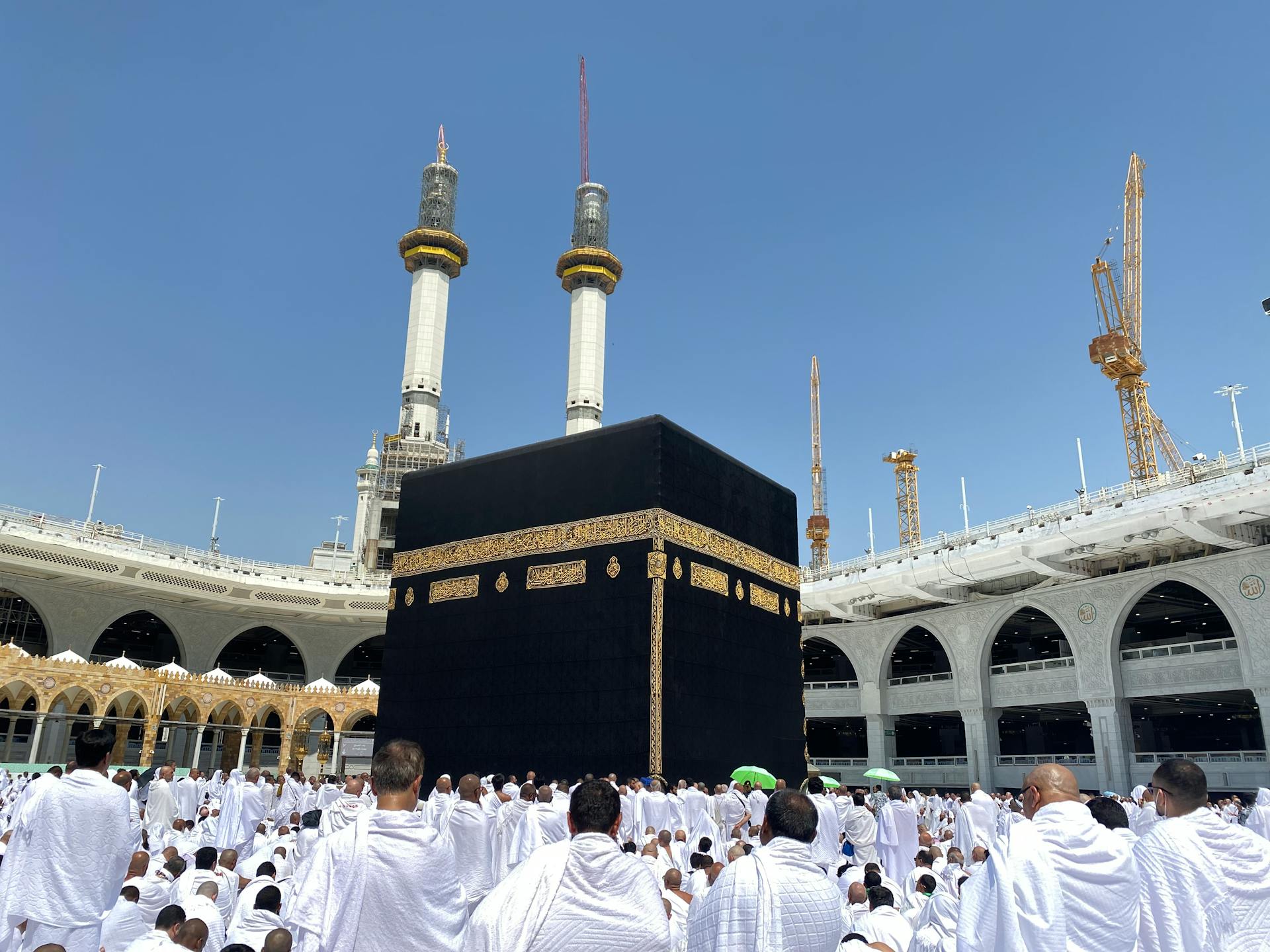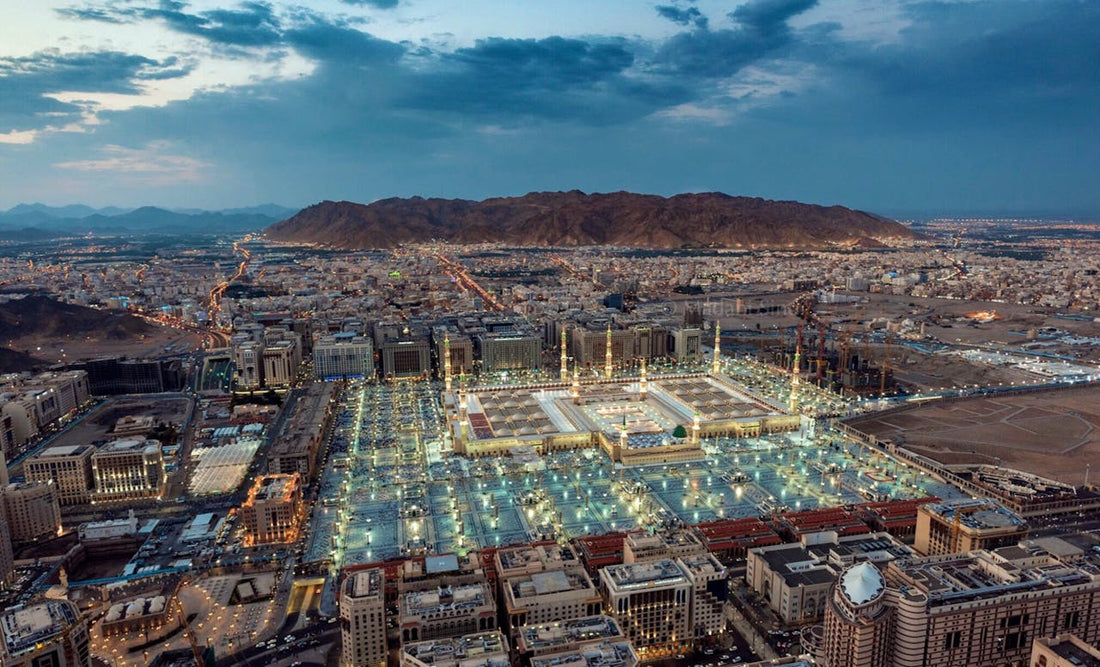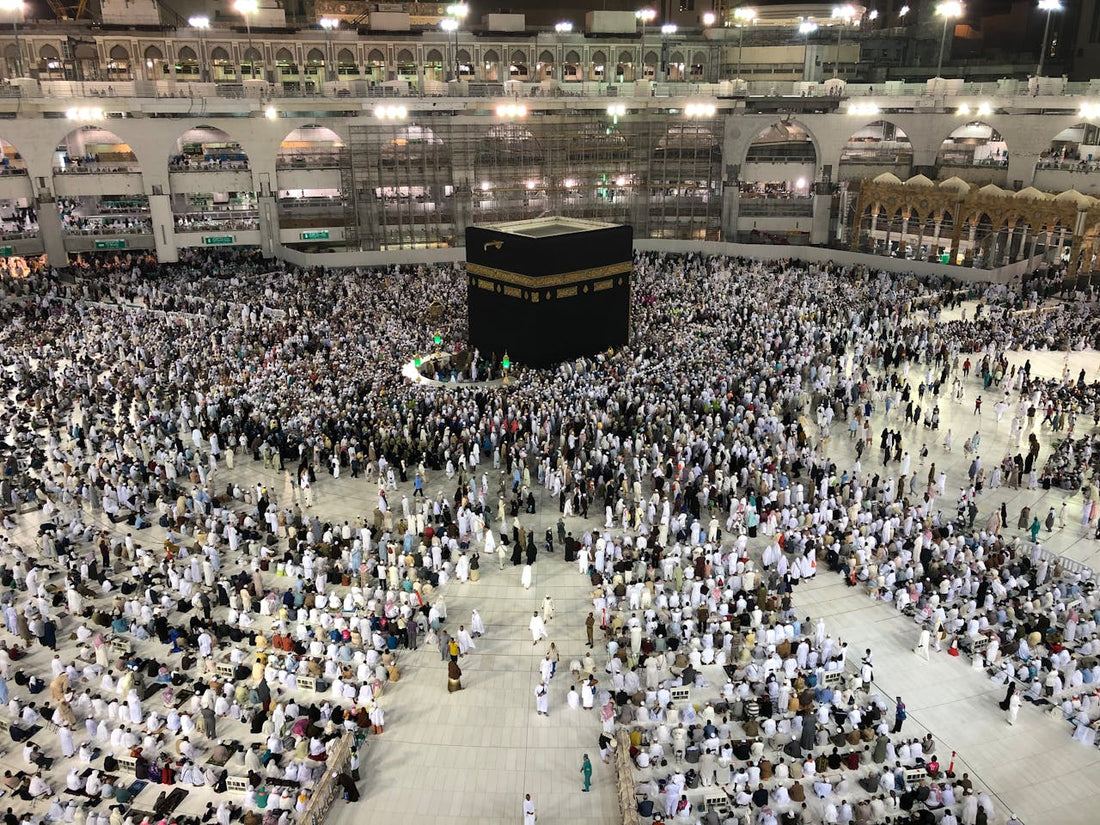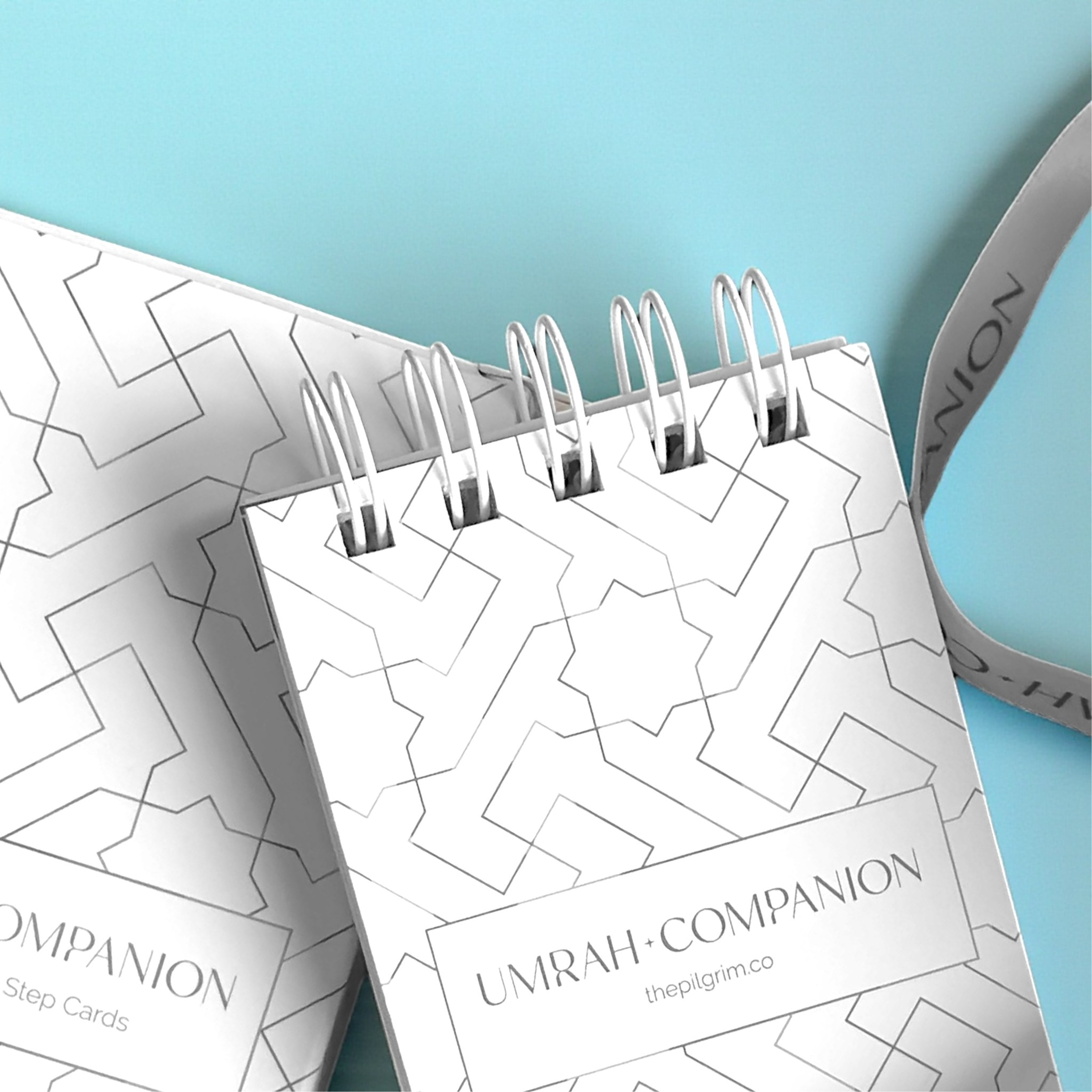There’s a moment at the end of every sacred journey that feels heavier than the beginning.
This is the moment of parting, a moment that requires you to say goodbye.
For pilgrims in Makkah, that moment is marked by the Farewell Tawaf, a final circuit around the Holy Kaaba before departing the holy city.
It’s not just a ritual; it’s a deeply emotional goodbye to the sacred space where one's prayers, tears, and hopes were placed.
Many Muslims, especially first-time pilgrims, wonder what this act really means, how to do it correctly, and whether skipping it affects their pilgrimage.
This guide answers those questions in detail, and by the end, you’ll not only know how to perform Tawaf Al-Wida but also why it matters.

What Is Farewell Tawaf During Hajj?
Farewell Tawaf, also known as Tawaf Al-Wida (طواف الوداع) in Arabic and Tawaf e Wida in Urdu, is the final act of devotion performed by pilgrims before leaving Makkah.
Here, the term "wida" means “farewell” in Arabic, symbolising the act of bidding goodbye to the Kaaba.
This final tawaf is obligatory (wajib) for those performing Hajj, but not for those performing only Umrah.
It is performed in the same way as other tawafs, which means seven counter-clockwise circuits around the Kaaba that start and end at the Black Stone (Hajar al-Aswad).
Is the Farewell Tawaf Mandatory for Umrah?
This is one of the most common misunderstandings among first-time visitors.
As mentioned before, no, Farewell Tawaf is not compulsory for Umrah pilgrims. According to the scholars, Tawaf Al-Wida is only obligatory during Hajj.
So, if you’re visiting for Umrah pilgrimage, you are not required to perform this final tawaf before leaving Mecca.
How to Perform Tawaf Al Wida?
Performing the Farewell Tawaf is similar to the general procedure of any tawaf, but with the intention of it being the last act before departure.

Here’s a step-by-step guide.
Niyyah (Intention)
Begin with the niyyah (intention) in your heart to perform Tawaf Al-Wida.
It’s about seeking closeness to Allah (سُبْحَانَهُ وَتَعَالَى) and fulfilling the rites of Hajj. As mentioned in the hadith:
“Actions are to be judged only by intentions…” (Sunan an-Nasa’i)
[source: Sunnah.com]
Making niyyah is an important part of Tawaf al Wida, as it sets this final tawaf apart from all other tawafs.
Steps to Perform Farewell Tawaf
- Step 1: Be in a state of wudhu (purification).
- Step 2: Wear appropriate attire (Ihram for men is not required at this point unless it’s still valid).
- Step 3: Enter Masjid al-Haram with humility.
- Step 4: Start from the Black Stone (Hajar al-Aswad), say “Bismillah, Allahu Akbar”, and begin your circuits.
- Step 5: Walk anticlockwise around the Kaaba and complete 7 rounds. During each round, make dua. For that, recite Qur’anic verses, dhikr, or any supplications from the Sunnah.
- Step 6: After completing the 7 rounds, perform two rak’ahs of prayer near Maqam Ibrahim, if possible.
- Step 7: Drink Zamzam water and pray as you wish.
- Step 8: Lastly, leave the Kaaba area with a heavy yet hopeful heart.
Reminder: No sa’i is required after Tawaf Al-Wida.
Dua to Make During Farewell Tawaf
While there is no specific dua mandated for Tawaf Al-Wida, you can recite the general supplications from the Qur’an and Hadith.
One widely accepted dua during Farewell Tawaf is:
رَبَّنَا آتِنَا فِي الدُّنْيَا حَسَنَةً وَفِي الآخِرَةِ حَسَنَةً وَقِنَا عَذَابَ النَّارِ
"Our Lord, grant us in this world [that which is] good and in the Hereafter [that which is] good and protect us from the punishment of the Fire."
(Surah Al-Baqarah, 2:201)
It's a moment of closeness to Allah (سُبْحَانَهُ وَتَعَالَى), wrapped in the uncertainty of whether you'll ever walk these sacred grounds again.
Therefore, use this time to make heartfelt duas for your family, your future, the Ummah, and for a return to this sacred place.
What Is Tawaf Al-Qudum?
Like Farewell Tawaf, which is performed at the end of the major pilgrimage as the final tawaf, there is another tawaf that is carried out when a pilgrim arrives in Makkah for Hajj.
It’s the first tawaf and is known as Tawaf Al-Qudum (the arrival tawaf). Performing this tawaf is a Sunnah for those not residing in Mecca and is done before proceeding to Mina.
Hence, this tawaf welcomes the pilgrim to the House of Allah (سُبْحَانَهُ وَتَعَالَى) and sets the spiritual tone for the days to follow.
What Is Tawaf Al-Wada?
Circling back, Tawaf Al-Wida, also known as the Farewell Tawaf, is the last rite pilgrims perform before leaving Makkah.
This tawaf is a way of bidding farewell to the Holy Kaaba. Here, the purpose is to ask for Allah’s (سُبْحَانَهُ وَتَعَالَى) acceptance and hope for a return.
Apart from Tawaf al-Qudum and Tawaf al-Wada, there’s another tawaf called Tawaf al Ifadha. Let’s find out what it is.
What Is Tawaf Al Ifadha?
Tawaf Al-Ifadha is one of the pillars of Hajj and must be performed after returning from Mina on the 10th of Dhul-Hijjah.
This tawaf signifies spiritual cleansing and is often referred to as the main tawaf of Hajj.
Missing this tawaf invalidates one’s Hajj, unlike Tawaf Al-Wida, which, although obligatory, can be atoned for by a sacrifice if missed with a valid excuse.
Is Tawaf Compulsory During Hajj?
The compulsion of tawaf during Hajj depends on the type of tawaf. The different tawafs in Hajj include:
|
Type of Tawaf |
When Performed |
Ruling |
|
Tawaf Al-Qudum |
Upon Arrival |
Sunnah |
|
Tawaf Al-Ifadha |
After Mina |
Pillar (Rukn) |
|
Tawaf Al-Wida |
Before Leaving |
Obligatory (Wajib) |
Frequently Asked Questions
Is the Nafl tawaf and farewell tawaf the same?
No, Nafl tawaf is a voluntary act that can be performed anytime, while Farewell Tawaf is obligatory before leaving Makkah during Hajj.
Do I have to wear ihram for farewell tawaf?
No, ihram is not required for Farewell Tawaf. It is usually performed in regular clothes, as it comes at the end of Hajj rituals.
What happens if I miss Tawaf al-Wida?
Missing it without a valid excuse (like illness) requires compensation through a sacrifice. This is especially important for Hajj pilgrims.
Why do Muslims perform Tawaf 7 times?
The number seven symbolises completion in Islam. The Prophet Muhammad (صَلَّى ٱللّٰهُ عَلَيْهِ وَسَلَّمَ) performed it this way and instructed the same, making it a Sunnah to follow.
Can you leave tawaf in between?
Yes, but only for a valid reason (for e.g., emergency, prayer, or illness). And when you return, you must resume from where you left off, not start over. However, if too much time passes, it's safer to repeat the tawaf.
Can you use the toilet while in Ihram?
Yes, you can. Using the toilet does not break Ihram, but you must perform wudhu (ablution) again before continuing acts of worship like tawaf or salah.
Summary – Farewell Tawaf
The Farewell Tawaf is a powerful and emotional act of worship that concludes the pilgrimage with dignity and gratitude.
It is obligatory for Hajj pilgrims but not for those performing Umrah.
So, whether it’s your first time or not, performing it correctly is a reminder of the connection you’ve built with the sacred city and a prayer to return.
One last point. Before you leave, let your last step be a step toward Jannah, not just the airport.
If you’re ready to make your Hajj or Umrah easier to plan and more spiritually enriching, sign up for our free Hajj & Umrah planning tool.
By signing up, you’ll get guided checklists, dua reminders, and step-by-step tawaf walkthroughs, all in one place. Hope you have a seamless experience. Farewell!






